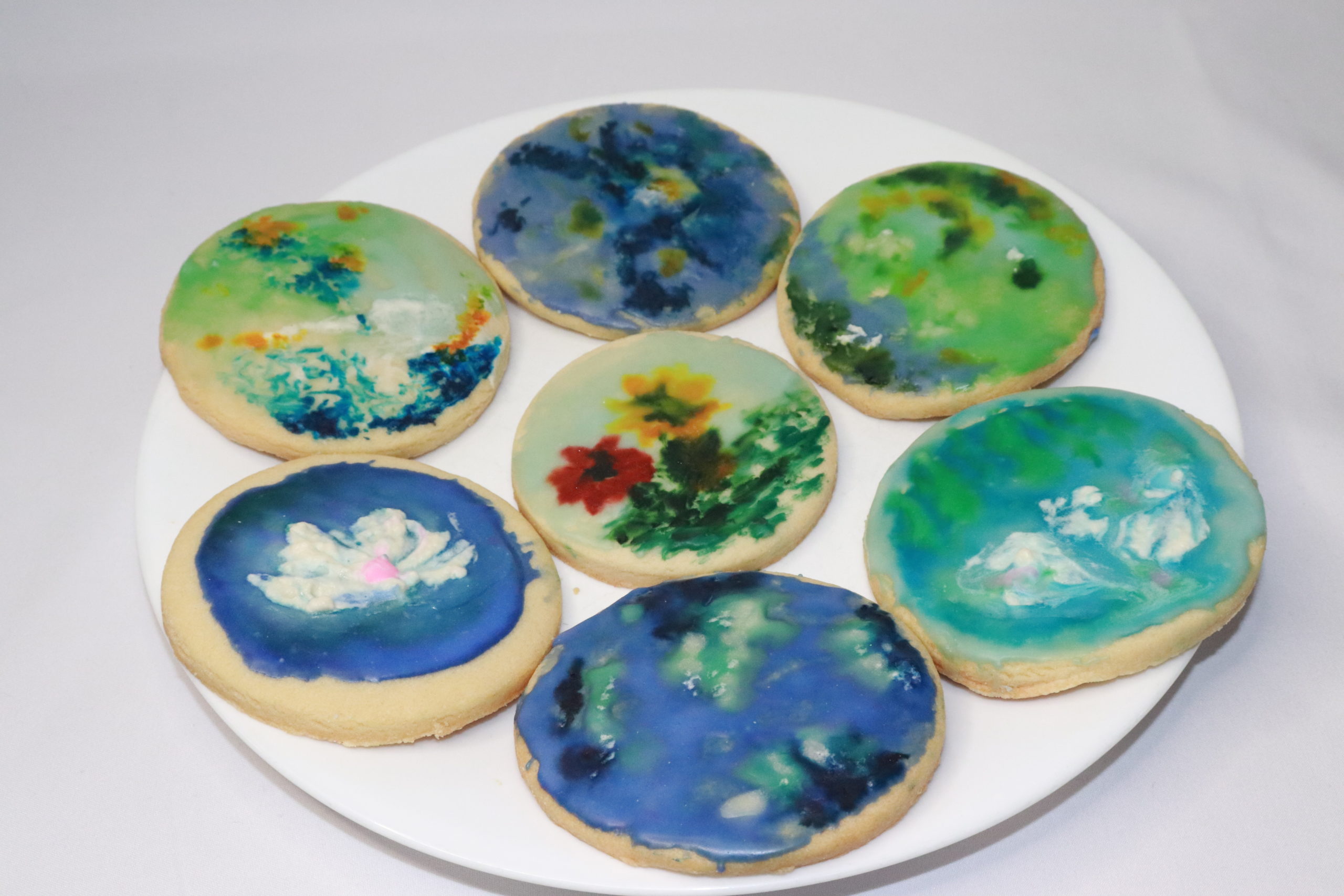
Post-impressionism is an art movement developed in the 1890s known for its use of vivid colors and real-life subjects, depicted in a distorted form. A few famous artists of this time include Vincent Van Gogh and Claude Monet. This week’s edition of Simply Signal Recipes takes inspiration from post-impressionist artists of the past and shows you how to turn your desserts into a canvas.
CLAUDE MONET-INSPIRED COOKIES
Cookie ingredients
- 1 cup unsalted butter (chilled and cubed)
- 1 cup granulated sugar
- 1 egg
- 2 teaspoons vanilla extract
- 1 1/2 teaspoons baking powder
- 1/2 teaspoon salt
- 3 cups all-purpose flour
Instructions for cut-out sugar cookies
- Preheat the oven to 350 degrees Fahrenheit. Line two baking pans with parchment paper. Set aside.
- Using an electric mixer on medium speed, beat the butter and sugar together until light and fluffy, about two minutes.
- Add the egg, vanilla, baking powder and salt. Mix until combined and smooth.
- Reduce the mixer speed to low and gradually add the flour, only mixing until the dough just comes together. Give it a final mix with a rubber spatula, folding and pressing it together to ensure all of the flour is mixed together.
- Separate the dough in half and work with one piece at a time. Roll the dough 1/4-inch thick. Cut out circles and place them on the prepared baking sheets, leaving at least one inch of space between cookies.
- Bake until the cookies look set and are slightly firm to the touch but still pale, about 10 to 12 minutes.
- Cool on the baking sheet for five minutes, then remove to a wire rack to cool completely.
- To decorate, use Claude Monet’s paintings for inspiration. Vivid colors, distorted forms and seemingly unnatural elements are standard in post-impressionist art. Use both a mixture of icing and placing food coloring directly on the cookie to add depth. Post-impressionist artists also thickly coated paint on their works, so use this same thickness on the cookie with icing.
(Recipe from Brown Eyed Baker and The Speckled Palate)
VAN GOGH SUNFLOWER CAKE
Cake Ingredients
- 2 cups all-purpose flour
- 2 cups sugar
- 3/4 cup unsweetened cocoa powder
- 2 teaspoons baking powder
- 1 1/2 teaspoons baking soda
- 1 teaspoon salt
- 1 teaspoon espresso powder
- 1 cup milk or buttermilk, almond, or coconut milk
- 1/2 cup vegetable oil or canola oil, or melted coconut oil
- 2 large eggs
- 2 teaspoons vanilla extract
- 1 cup boiling water
Instructions for cake and decoration
- Preheat the oven to 350 degrees Fahrenheit. Prepare a 9-inch cake pan by spraying with baking spray or buttering and lightly flouring.
- In a large bowl or stand mixer bowl, add flour, sugar, cocoa, baking powder, baking soda, salt and espresso powder. Whisk through to combine or, using your paddle attachment, stir through flour mixture until combined well.
- Add milk, vegetable oil, eggs and vanilla to the flour mixture and mix on medium speed until well-combined. Reduce the speed and carefully add boiling water to the cake batter until well combined.
- Distribute cake batter evenly between a circular cake pan. Bake for 30-35 minutes until a toothpick or cake tester inserted in the center of the chocolate cake comes out clean.
- Remove from the oven and cool for about 10 minutes. Cut out a circle in the center of the cake.
- Decorate the cake using Vincent Van Gogh’s sunflower paintings for inspiration. Frost the cake with light blue buttercream frosting dyed with food coloring. After covering the cake in a crumb layer, use a circular tip to pipe the outside of the cake. Create circles in a vertical direction until the entire cake is covered.
- At the top, create small sunflowers using yellow buttercream frosting and leftover cake bits for the center. Use green frosting to pipe small leaves at different points on the flowers.
(Recipe from Add a Pinch and My Baking Addiction)
